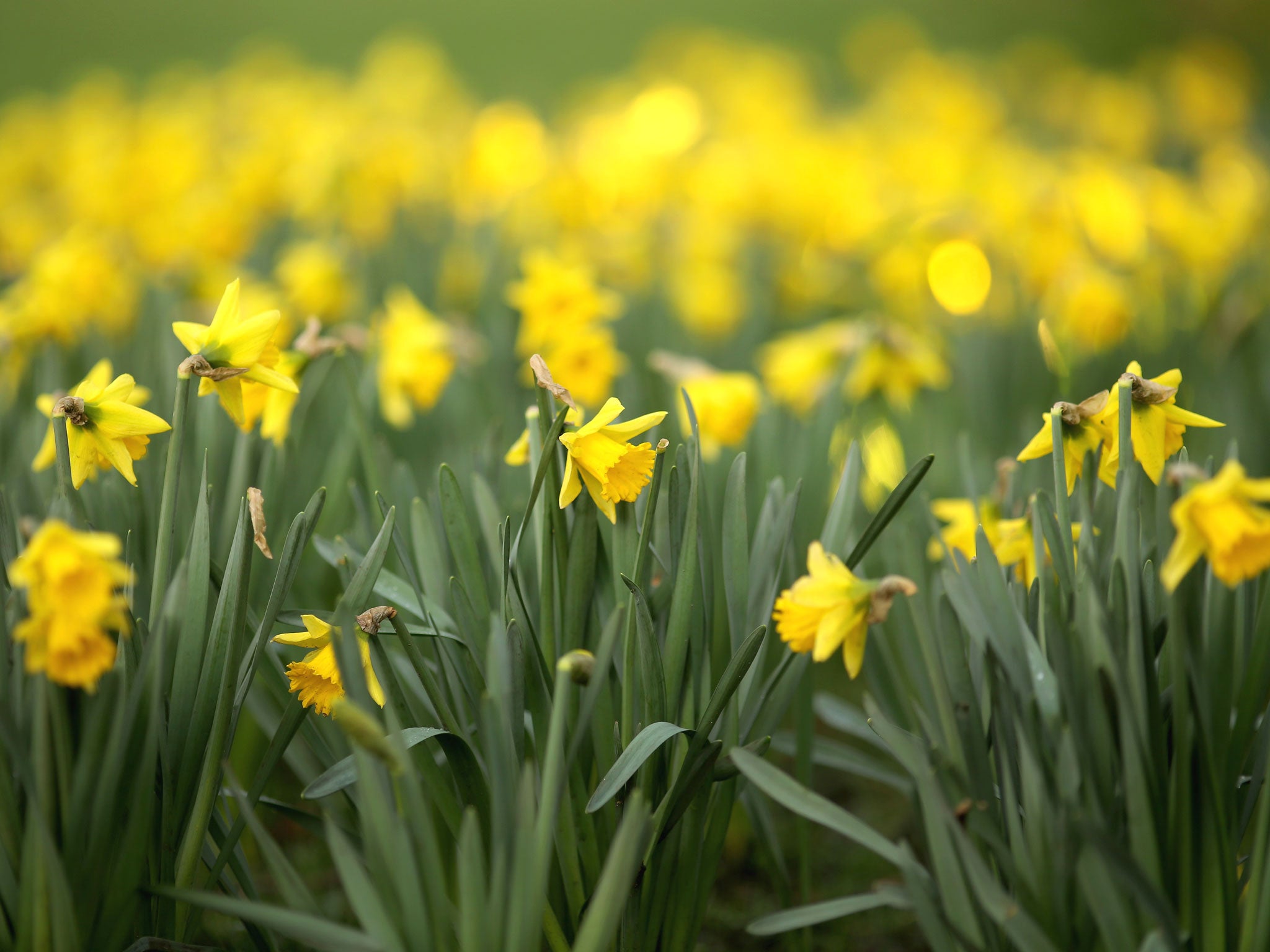I wandered lonely through a secret daffodil wood
Nature Studies: Wild daffodils are much smaller and more delicate than the cultivated kind, and they are a knockout

As the natural world grows ever more degraded, it becomes harder and harder to see really worthwhile things, so at the weekend I made a special expedition to see something singular: wild daffodils.
Right now, of course, we are in the heart of the daffodil season, and the flowers must be among the most familiar in the world. But the big yellow blooms that people know tend to be the cultivated versions of the wild plant; and there are more than 27,000 varieties of those.
Wild daffodils, on the other hand, which up until the 19th century were common all over Britain, even on the outskirts of London, are now very much rarer, and have a scattered distribution generally in the west. There is an area on the Herefordshire-Gloucestershire border known as “the golden triangle” for its abundance of the flowers, which hosts a 10-mile walk to see them, the Daffodil Way.
I had never seen them, until Sunday. I didn’t have time to go to Herefordshire, but I was lucky in that a friend of mine who is an expert botanist knew of a wood with wild daffodils somewhat closer to the capital; when we parked the car, we were 49 miles from my west London home. And then there was a walk of about a mile.
Clinging on to the side of a valley and bisected by a stream, the wood is unknown, other than to local people; it is only shown, not named (although it has a name) on the standard Ordnance Survey map. It is a secret, I suppose. There is no sign to it, or on it. But there they were, and at the sight of them, I was taken aback.
For wild daffodils are much smaller and more delicate than the cultivated kind, especially the popular varieties such as Dutch Master, which are two feet tall with blowsy trumpets the colour of egg-yolks, and cram municipal flower beds in ranks of thousands. The wild plants, with their blue-green leaves as thin as watchstraps, are half or even a third of the size. They seemed far more individual. Graceful, fragile, they were scattered across the woodland floor in ones and twos and stood out against their leaves like pale yellow stars in a blue-green sky.
I told my botanist friend what a knockout I thought they were and he said: “Everybody who sees wild daffodils for the first time is a bit surprised at how dainty they are, and what a subtle beauty they possess. They seem much more alive than the garden ones.”
Standing in the wood, the silence broken only by birdsong and the tiny clatter of the stream, I was struck by the fact that these flowers had probably been there uninterrupted for thousands of years. The wild plants were what Shakespeare had seen, of course, when he wrote in The Winter’s Tale of “daffodils/ that come before the swallow dares”, and what Wordsworth saw to inspire his best-known poem, at Gowbarrow on Ullswater, in April 1802. They hadn’t been planted by Cumbria County Council.
Wordsworth’s Daffodils – “I wandered lonely as cloud…” – is charming if too familiar for most of us to appreciate properly now; but his sister and companion Dorothy wrote in her journal a description of the same flowers which remains wonderfully fresh (it’s quoted in Richard Mabey’s Flora Britannica): “They grew among the mossy stones about them… some rested their heads upon these stones as on a pillow for weariness; and the rest tossed and reeled and danced and seemed as if they verily laughed with the wind, that blew upon them over the lake; they looked so gay, ever glancing, ever changing…”
I know how they felt, the observers of the past. I came away from my secret wood on Sunday thinking the world still had great things in it, despite the rate at which it is being wrecked.

Join our commenting forum
Join thought-provoking conversations, follow other Independent readers and see their replies